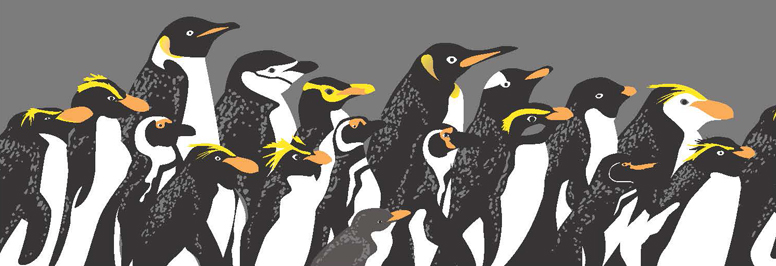Protecting the World's Penguins

Penguins, charismatic and quirky birds, have inspired films, books, comic strips, and sports teams. But despite their global popularity, many penguin populations are in trouble, and humans are largely to blame.
The Southern Hemisphere is home to 18 species of penguin that range in size and appearance, but all share common traits. From the 75-pound, 4-foot-tall emperor penguin of Antarctica to the 2-pound, 16-inch little (blue or fairy) penguin of Australia and New Zealand, their characteristics set them apart from all other birds. Though flightless, they are expert swimmers. Some can dive deeper than 500 meters (1,640 feet) and stay submerged for 20 minutes. They are known for waddling ambles on land, but some routinely scale sides of cliffs or migrate hundreds of miles each year, walking or tobogganing on icy landscapes. They are well suited for life on land and at sea. Their distinctive black-and-white coloring provides countershading to protect them from predators by blending their backs and bellies with the sea or the sky.
Over millions of years, penguins have adapted to difficult conditions and diverse ecosystems. But today, all populations—from the cold of Antarctica to the warmth of the Galápagos Islands—are feeling the effects of human activities, including pollution, poorly managed fisheries, and habitat degradation. The number one threat to penguins worldwide, however, is climate change. According to the International Union for Conservation of Nature, or IUCN, the majority of penguin populations are in decline. And the state of their well-being is a portent of larger environmental concerns: These birds are sentinels for the health of the entire sea. Changes to their populations can indicate trouble for other species that depend on these waters for survival.
Now is the time to protect these iconic birds and the ocean so critical to us all.











